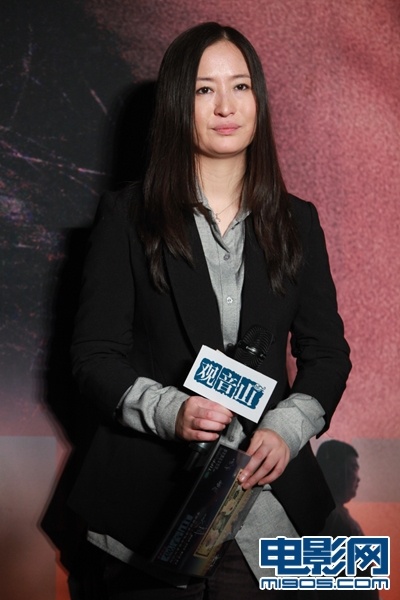"Farmhouse economy" enters new track
Relying on the advantages of good mountains and good water, Lujiang County, while vigorously developing high-quality homestays, guides and encourages qualified farmers to develop family homestays, starts the public brand of Lujiang "Lianlu Xiaoshe" family homestays, and creates a differentiated development pattern of the homestay industry. After active exploration, the county has built more than 30 family homestays, solving the local employment of nearly 100 people, and driving the village collective income to increase by 1 million yuan.
Differentiated development makes homestays more accessible to the people
Recently, the reporter walked into the Yuntang small courtyard located in Macao Village, Tangchi Town, Lujiang County. The courtyard was clean and tidy, and the well-designed pond was rippling, and it felt cool and comfortable in the pavilion. Walking further inside, a two-story guest room building hidden by green plants was particularly quiet and elegant.
"We opened in April this year, and the holiday rooms are full, so you need to book two weeks in advance," said Yan Jianhua, the owner of the small courtyard.
A few months ago, Yan Jianhua was a stay-at-home mother. Now she has a very fulfilling life while picking up and dropping off her children, taking care of the bed and breakfast and receiving guests. Last year, she and her husband were immediately tempted when they learned that the local government had introduced policies to encourage farmers to run family bed and breakfast. With the help of the local government, the couple rented this residential house with good location and good surrounding environment. After more than half a year of careful renovation, it opened to welcome guests on the eve of "May Day".
In recent years, Lujiang County has developed a "farmhouse economy" in an all-round way, and 37 boutique homestays such as Yunlianwa have emerged. In order to further revitalize the idle farmhouses in rural areas, solve the problems of high consumption and insufficient supply in the homestay market, and drive more people to increase their income and become rich, the county has been promoting the differentiation of homestay products since last year, targeting the development goal of family homestays.
"Different from the boutique homestays built before, family homestays are more close to the people." Wang Fenglan, director of the Lujiang County Culture and Tourism Bureau, told reporters that in terms of scale, boutique homestays are larger in scale and have more rooms, while family homestays are smaller in scale, and the number of rooms is usually only set to a few. In terms of price, the price of a family homestay is only two or three hundred yuan per night, and in the off-season or when there are preferential activities, it will be even lower. In terms of consumer groups, family homestays are more suitable for groups who come to health care and vacation, allowing tourists not only to "stay", but also to "slow down" and "stay".
In order to fully do a good job in the pilot and exploration of family homestays, Lujiang County issued the "Implementation Opinions on Revitalizing Idle Farmhouses to Promote the Development of Family Homestays", proposing specific measures around "demonstration leadership, standard construction, operation management, supporting services, publicity and marketing, and daily supervision", and introducing a number of incentive policies to escort the development of family homestays.
Lujiang County in Tangchi, Wanshan, Ketan, Yefu Mountain and other towns with better tourism resources to pilot, site highlight "scenic spots, scenic road, boutique B & B side" of the "trilateral" standard, requiring the village cooperative through storage or leasing, to create a number of family B & B model. At the same time, the integration of rural living environment improvement, rural construction and other funds to improve the surrounding infrastructure building of family B & B. The establishment of family B & B awards to supplement special project funds to encourage the development of family B & B. Up to now, the county has honored the family B & B award to supplement 1.723 million yuan.
Yuntang Courtyard, the original house by the stream, a corner of Wangshan, Dongli Inn… Each and every one of the distinctive family homestays "sprouted" and thrived in many townships in Lujiang County.
Standardized management to provide excellent service for homestays
Homestays should not only be built well, but also managed and operated well.
"Standard construction is not only an important foundation for improving the design taste and reception service level of rural homestays, but also an action guide to lead the development of family homestays to higher quality." The relevant person in charge of the Lujiang County Culture and Tourism Bureau told reporters that the county has paid close attention to standard construction, formulated the "Basic Requirements and Grading of Tourism Homestays", standardized the construction standards of family homestays, and clarified the basic conditions of family homestays in terms of space planning, land use, ecological protection, public security management, health and safety, and service level. Strengthen the grading of family homestays, and award three, four, and five-star family homestays according to the standards.
"These bed sheet and quilt covers are all handed over to professional companies for cleaning." When the reporter came to Xingfuli B & B located at the entrance of Baihua Village in Tangchi Town, Li Lijian, the head of the B & B, pointed to a pile of bed sheet and quilt covers that had just been replaced and were being packaged. For the aspects of food hygiene and fire safety in the B & B, relevant departments will arrange special personnel to guide inspections every month and help solve problems in operation.
Lujiang County has clarified the main body of management, established a county leading group for the healthy development of tourism and homestays, and a county homestay supervision and service center, which is responsible for the regular supervision and guidance of family homestay business behavior, and guides the standardized and orderly development of the industry. Each pilot town has established a special class for family homestay promotion, which is responsible for guiding farmers’ planning and design, construction and operation management throughout the process. At the same time, optimize the approval process, establish a joint acceptance team composed of public security, housing construction, fire protection, market supervision, health and health, cultural and tourism departments, and invite housing quality and safety experts to carry out free housing quality and safety appraisal, and optimize the process of homestay license processing to provide "one-stop" services.
The key to improving service is people. "Last year, I participated in the training of homestay butlers organized by the county, and I have a better sense of how to operate." Li Lijian said that the training was "very clear" for all kinds of problems encountered in running a homestay.
The relevant person in charge of the Lujiang cultural and tourism department told reporters that the county has established a homestay association and a homestay butler training center to systematically carry out homestay butler training. Four homestay butler training courses have been held, and three homestay butler training bases have been established. A total of more than 400 homestay butlers have been trained. Encourage family homestays to benchmark high-quality homestays, check and fill in gaps in personnel training, business philosophy, service awareness, etc., and continuously improve service quality.
Branding to make the hotel vibrant
In early summer, the vast countryside of Lujiang County is lush with vegetation, the river is meandering, and the sky is clear and blue. Between the refreshing "green" and the pure and broad "blue", the artistic family homestays are dotted among them, which is fascinating.
Every homestay has a common brand – "Lianlu Xiaoshe".
"We continue to launch the public brand of’Lianlu Xiaoshe ‘family homestay, and carry out multi-faceted promotion and publicity." The relevant person in charge of the Lujiang County Cultural and Tourism Department told reporters that the county has set up a special class for family homestay marketing, incorporated family homestay promotion into the annual tourism promotion plan, regularly updated and released the county’s family homestay directory, and used official platforms such as Lujiang Cultural and Tourism, Micro-gathering Lujiang to push family homestays for more than 100 times, with a cumulative number of clicks exceeding 100,000. Regular family homestay special promotions have been launched, attracting nearly 1,100 consumers this year, driving family homestay sales to exceed 200,000 yuan.
To build a brand, in addition to making enough promotional articles, it is also necessary to demonstrate individual characteristics.
"Xiaodu Xiaodu, open the curtains…" Stepping into the room of Xingfuli Homestay, you only need to have a simple conversation with the intelligent voice device, and the commands issued by the guests to open the curtains and turn on the lights can be quickly achieved.
"Not only do we have smart rooms, but we can also see the mountains and the water. Not far away is the beautiful Jintang Lake." Li Lijian said proudly, pointing to the sparkling lake.
In Yan Jianhua’s Yuntang small courtyard, in a green vegetable garden, peppers, beans, eggplants and other vegetables are growing happily.
"The vegetables that guests eat are basically farm dishes grown by themselves." Sister Yan took out a menu, including all kinds of stir-fried vegetables, cooking vegetables, pots, soups, etc.
During the interview, the reporter learned that in accordance with the positioning of ecology, leisure and health care, Lujiang County encourages family homestays to improve the development quality of farm dishes and guides each family to introduce three to five signature dishes.
The development of homestays has further promoted the employment of the masses. "The monthly salary is 3,500 yuan, the work is easy, close to home, and you can take care of the children." Wang Min, a villager who works in Yuntang Courtyard, said. At present, 31 homestays have been built in Lujiang County, solving the local employment of nearly 100 people.
In addition, taking advantage of the development of family homestays, more characteristic agricultural products have gone out of the "boudoir" to help farmers increase their income.
"Farmers in the vicinity often bring their own lily, corn, bamboo shoots and other agricultural and sideline products to us for exhibition. Many guests who come to stay have the demand to buy tea, and I will also contact the tea factory next to it." Li Lijian said. Lujiang County is actively guiding the development of family homestays and selling local agricultural and sideline products, leisure food, local handicrafts, etc.
A farmhouse is a landscape, an Internet celebrity clock in point, an industrial growth point. The relevant person in charge of the Lujiang County Cultural Tourism Department said that with the continuous deepening of exploration, the "spark" of Lujiang Family Homestay will form a "prairie fire", help the rural comprehensive revitalization, and hold up the "dream of common prosperity" of more rural people.













































